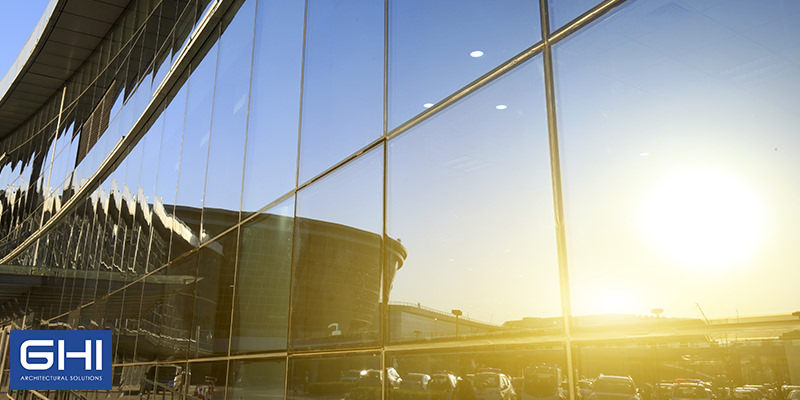See The Light With Aluminium-Framed Curtain Walls
Ever since aluminium became available for non-military use after the end of World War II, this incredibly versatile material has found numerous applications throughout the construction industry. It is used extensively for doors, exterior cladding, suspended ceilings, roofing, wall panels and partitions. It is also the material of choice for many glazed structures, such as window frames and curtain walling systems.
What Is Aluminium-Framed Curtain Walling?
You may know curtains as something we use to cover a glass window at night. A curtain wall, on the other hand, mixes the coverage properties of a traditional fabric curtain with the protective qualities of a wall. The result is something quite spectacular.
Unlike a traditional wall, however, a curtain wall is non-loadbearing. It’s most commonly made of an aluminium frame in-filled with glass, although other fill materials, such as thin stone, fibre-reinforced plastic, louvres or vents, terracotta or metal panels, are sometimes used instead. When made using glass, a curtain wall provides maximum light while still offering important technical benefits, such as insulation.
Curtain walls are always installed on the outside of a building. Although the aluminium frame is secured at points to the building’s slabs, the wall actually stands completely on its own structure. They are usually very impressive to look at, and, depending on which type of curtain wall is used, can appear from the outside to be a continuous expanse of seamless glass.
There are two main types of curtain walling, namely flush glazed and pressure glazed. It is the flush-glazed walls that appear as one huge slab, with only a little silicon joining the panes together. With pressure-glazed walls, the aluminium frame that holds the glass is exposed, and can thus be seen from the outside.
Curtain walls can be installed on site, piece by piece (stick systems) or off-site and delivered in modular or panel form (unitised systems). With a stick system, the glazing can be inserted into the aluminium frame from either the inside or the outside, depending on ease of access. Because unitised systems are assembled under controlled factory conditions, installation time on site is greatly reduced. Stick-framed curtain walls also provide lateral resistance, while still allowing thermal movement.
Why Is Aluminium The Best Material For Curtain Wall Frames?
Curtain walls have to perform many different functions. It’s therefore very important to choose the right material for the frame so that the correct support is given to the panels. Frames have to:
- Provide thermal insulation
- Transfer the load back to the primary structure of the building
- Create a waterproof barrier
- Prevent panels from falling out
- Offer smoke, fire and acoustic separation
The many properties of aluminium make it the ideal choice for curtain wall frames. It is lightweight, but still strong – especially when alloyed with other metals. It is also highly resistant to corrosion, naturally creating a protective oxide coating. This makes it ideal for applications where it is exposed to heat, light, wind and rain.
Advantages Of Curtain Walls
Curtain walls are a common feature on many modern buildings. Like most successful design features, they succeed in both form and function. In addition to being aesthetically striking, curtain walls have a number of other benefits too:
Slow Down Fires
By acting as a barrier, curtain walls can help slow down the spread of fire between floors, effectively preventing it from transferring across the outside surface of a building. Once again, this is particularly beneficial in tall buildings that might otherwise be vulnerable to a fire spreading quickly upwards.
Natural Light
Natural light is far better for us than the artificial kind, and with a glass and aluminium curtain wall, you are guaranteed plenty of natural light. This is not only better for the health and well-being of employees, but it is also actually essential for those professions – such as fabric designers, graphic artists and architects – that rely on plenty of natural light in order to produce quality work.
GHI Architectural Solutions has been the leading distributor of hardware to the South African architectural aluminium industry for over 25 years. We may not install curtain walls, but we do pretty much everything else, providing all the aluminium framework and hardware you need for your curtain walling system. Chat with us today.

